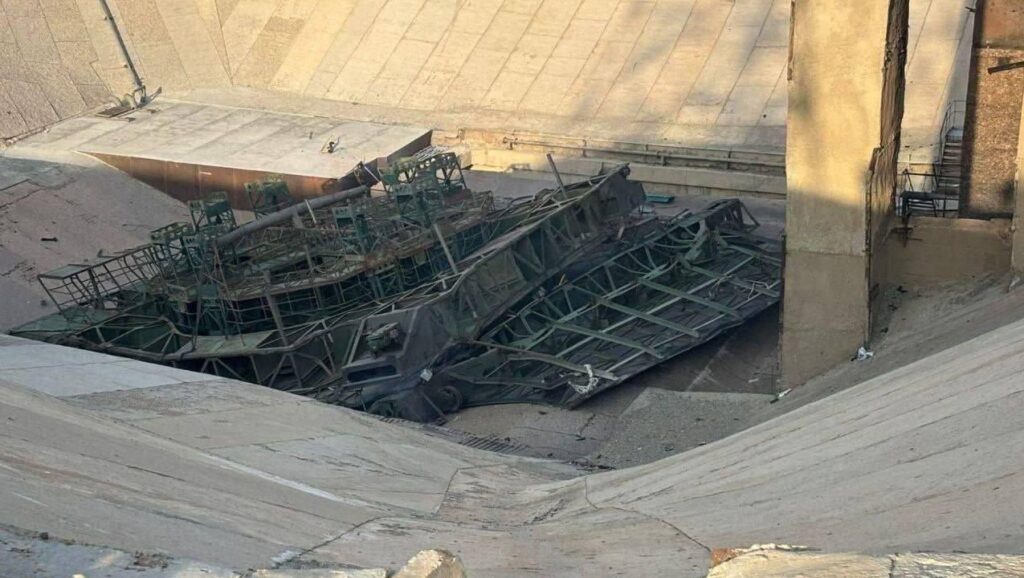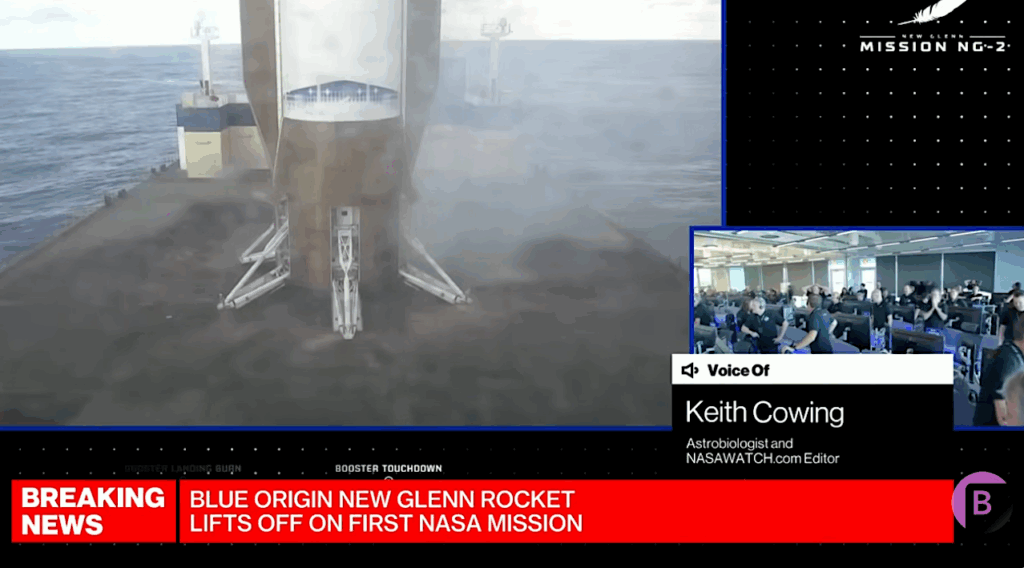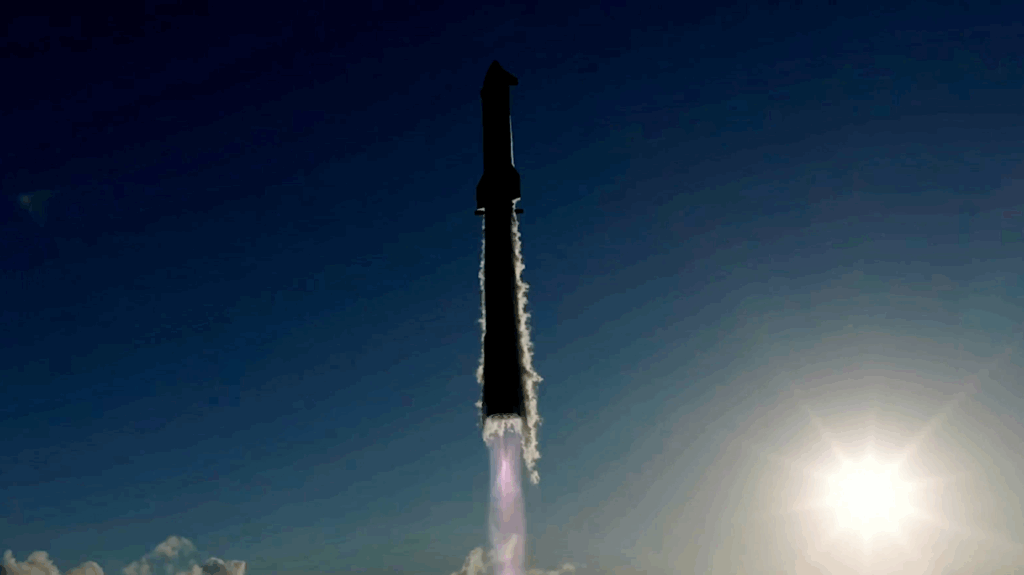The Fallacies Behind SLS
 SLS Will Never ‘Back Up’ Commercial Crew, Jim Muncy, Space News
SLS Will Never ‘Back Up’ Commercial Crew, Jim Muncy, Space News
“One such argument is the claim from both houses of Congress that the funding for the Space Launch System (SLS) — which increases from the 2012 level — is too small to enable the SLS to launch the Orion Multi-Purpose Crew Vehicle (MPCV) as a backup for commercial crew services. Some even suggest that NASA is putting too much money into the legislatively stipulated primary means of carrying astronauts to and from the international space station (commercial crew) and therefore shortchanging the backup (SLS). Of course, NASA is spending nearly four times as much on Orion and SLS as it is on commercial crew, so the argument appears lopsided.”









This was written for the moon thread but lots of it applies here. All the money that goes to SLS should be used for something else.
Below is an example of a much cheaper heavy lift that Spacex could have flying in just a few years.
Congress!!! Commercial doesn’t need an over size to expensive backup! That money should be spent on missions for the growing commercial space companies to do!
Clem!!!! We can be a part of new space economy too! You know how much work you and I have done building motels and apartments and interior up-fits. Well guess what. There will be work at ET city in outer space! Yup you remember all those shuttle launches. A hundred and something. Well I read in a NASA watch post how easy it was for the shuttle to drag it’s external fuel tank to orbit. Yup clean structures just perfect for roomy living units. All we would need to do is hire some architects to design for our space customers, send some up-fit packages up on a recoverable falcon 9, heavy, or falcon six pack, and we will be rich!
I’m not sure where the Leo Shuttle ET depot is. But I’ll look into it. NASA is looking out for our future. Surely they had the vision to save all those tanks. Each shuttle launch cost a billion plus a pop. Yup I bet you and I could make enough money that we could afford to retire at ET SPACE CITY!
Joe Q Tax Payer
I wonder how many they still have left! Surely many of them are being used to build fuel depots for the inner solar system railroad.
Waste not want not.
An old adage used by many successful businesspersons.
If a privite company had been running the whole shuttle program there is no way in hell they would have burned up all those tanks.
And no one even speaks here when I bring up versions of Tinkers lifter that puts a big hydro into space every launch.
A falcon six pack is two falcon heavies mated together on a launch pad after horizontal integration, that uses either 54 merlins engines or six Merlin 2s
It’s not as clean as Tinkers lifter or as big. But it’s cheaper, and could be built sooner. And it sure could build this space railroad to moon, mars, or way out there, pretty darn fast and cheap.
No new factories needed! Just feed Spacex missions based on a smart plan and watch us build our way to the stars.
Note to Martians, Commercial Space is your ticket to ride.
Note to loonies, Commercial Space is your ticket to ride.
Note to deep science, Commercial will provide cheaper launch leaving more money for your science packages.
You fight them you end up no where! Out of money out of hope!
Note to the world we can build a space economy if we start here with first things first, be wise be smart.
Note to NASA your main jobs should be to provide the r and d to make space affordable. Next your job should be to plan that economic and physical railroad to space. And design missions that build it.
Note to congress this is a new day a new start let’s continue with VISION. It is time for you to invest in our future with wise choices and stop giving in to all worldly pressures and realize that we can make our own successful future if we want too and you let us!!!!!
DON’T WASTE OUR FUTURE ON AN OLD FASHION ROCKET!!!
The time is now to build airlines to the sky, not Giant old boats like the SLS Titanic!
America/world wants a growing future. And one direction for that is up!!!!!!!
Let’s work to figure it out! Where do I sign up for your highway to the heavens brain storming political site MR. WHITFIELD!!!!
I want be part of a plan that is not foolish like Giant EXPLORATION throw way programs that end and leave us with NOTHING!!!!!
I also want to to be able to go after some politicians, and be able to point to an easy to understand plan. And say we need to be doing this not that.
Ok standing on this soap box has me a little dizzy lol
I’ll shut up lol
The SLS really won’t be able to serve as a back up to commercial crew before the year 2020 for the simple preseason that it won’t have enough engines from the Space Shuttle program to serve as a reliable back up. And the new RS-25E engines are probably not going to be available until at least 2020. This is mostly because were underfunding the program. The Constellation program by 2013 was supposed to have an annual budget above $5.4 billion, increased from $3.4 billion a year by terminating the Space Shuttle program.
SLS/MPCV funding is actually reduced by the current administration in 2013 to under $3 billion a year while the budget for Commercial Crew development and the ISS are increased. This means that manned LEO programs (Commercial Crew and the ISS) are receiving substantially more money from the administration than beyond LEO programs.
The core of the problem is that the administration really doesn’t see the necessity for the Federal government to have a manned space program in the first place! He’s part of the wing of the Democratic Party that’s always been hostile towards manned spaceflight and views it as a waste of tax payer dollars that could be better used for social programs. So he supports Commercial Crew Development as a private alternative that he hopes will eventually kill wasteful NASA spending on manned spaceflight.
Fortunately, most Democrats and Republicans in Congress don’t view NASA’s manned space program so negatively. And NASA is the best friend that Commercial Crew Development has ever had. There wouldn’t even be the possibility of Commercial Crew Development without NASA.
The nation needs a strong pioneering government space program and strong private commercial (profit based) space programs. Both are mutually beneficial to each other and both are good for the US economy and for the technological advancement of the nation.
Marcel F. Williams
Perhaps you should look at the statements of the Republican candidates. Not one of them has voiced a word of support for $L$/Orion. Even Bush never appropriated the money, or even acknowledged the cost. You can’t have tax breaks and Apollo, the Sequel.
The Bush administration’s budget for the Constellation was about nearly $2.7 billion in 2008 which was increased to over $3.4 billion a year by the time President Obama took office.
As I stated above, further increases in the Constellation budget were to occur as the result of canceling the Space Shuttle program. And Bush is responsible for committing the US to ending the shuttle program. The problem is that even $5.4 billion a year still wasn’t enough to fund the Ares V heavy lift core vehicle, EDS stage, and the Altair lunar landing vehicle. These were to be funded later by canceling the ISS program after 2015.
Its not too surprising that Republican candidates are running on an anti-science agenda in order to garner support from conservatives that are inherently suspicious of science and spending tax payer money on science– unless such spending involves weapons of mass destruction! Why Newt didn’t realize this about his own party– is surprising!
Marcel F. Williams
The budget proposed for Constellation by the Bush Administration was completely unrealistic, as John McCain pointed out at the first Senate Hearing on the VSE in january 2004. The greater problem is that the VSE produces no benefits (scientific, technological, economic, or geopolitical) that are commensurate with its cost. As to eliminating the ISS, if we cannot be productive in LEO we certainly cannot be productive on the moon.
LEO is extremely productive as far as commercial satellites are concerned. Its a multi-hundred billion dollar a year industry. Space stations at LEO as tourist destinations might also be productive at LEO. Whether, microgravity produced products will ever have substantial commercial value is still unknown.
A lunar base, however, could have immediate scientific and economic value. A Moon base should be able to tell us within two or three years if low gravity environments are either deleterious or harmless to the human body which could have huge implications as far as interplanetary travel and colonizing other worlds. And mining ice on the Moon for water, air, and fuel will have enormous economic implications within cis-lunar space as far as space industrialization and space tourism are concerned.
And if there are also substantial amounts of carbon and nitrogen at the lunar poles, then that will only be icing on the cake!
Marcel F. Williams
I should also note that apparently the US Navy invented the lunar rail gun last week. They are now testing a 12 meter long electromagnetic weapon that can accelerate a 20 kilogram aluminum projectile at between 2 to 2.5 km/s. Lunar orbital velocity is about 1.8 km/s. The Navy hopes that the device will be able to launch 10 projectiles per minute!
http://www.chron.com/news/a…
http://www.engineeringonthe…
Marcel F. Williams
We need more options than just SLS HLV or no exploration beyond LEO.
ULA has written up a EELV based exploration architecture. SpaceX has a Falcon Heavy that likewise seems plausible. Both of these have more components with active flight history today than SLS – so its not due to lack of potential.
Perhaps what we are facing is a “my way or the highway”?
The problem is that even $5.4 billion a year still wasn’t enough to fund the Ares V heavy lift core vehicle, EDS stage, and the Altair lunar landing vehicle. These were to be funded later by canceling the ISS program after 2015.
There were several reports written, including the GAO report in 2008 that made the point that even by 2011 Constellation was going to be seriously underfunded. Rather than figure out a plan B, things proceeded blissfully ahead. The Augustine commission said the same thing, $3 billion A YEAR more (well before any ISS cut off date) or this project was not going to fly. Kudo’s to the Obama administration for ending the agony but the follow on is even more underfunded and without any goal.
Lets turn this around, if the SLS was cancelled there would be billions in the budget to support the development of in space transportation systems that would be reusable and our ticket out of LEO. The increased flight rate of EELV’s and Falcon’s would help lower the unit price for everyone in the government as well.
We simply don’t need heavy lift to get back to the Moon and if we get the Moon, we get the rest of the solar system.
If the $3 billion a year SLS/MPCV was canceled then the NASA budget would simply be cut by $3 billion since Obama has already said, and said so forcefully, that he doesn’t want Americans to return to the lunar surface.
Marcel F. Williams
“If the $3 billion a year SLS/MPCV was canceled then the NASA budget would simply be cut by $3 billion since Obama has already said…”
Marcel:
NASA and the White House had originally planned to spend the funding, later appropriated to SLS, on initiatives with a higher ROI for space development than heavy lift flights once every 2 years. One need look no further than the 2010 negotiations to see that NASA and the White House’s original budget request intended to invest in breakthrough technologies, including deep space transportation challenges. These technology initiatives are now short changed to pay for SLS. While OMB might want to, the final White House request, absent SLS, did *not* gut NASA human spaceflight.
John Kavanagh said: “NASA and the White House had originally planned to spend the funding,
later appropriated to SLS, on initiatives with a higher ROI for space
development than heavy lift flights once every 2 years. One need look no
further than the 2010 negotiations to see that NASA and the White
House’s original budget request intended to invest in
breakthrough technologies, including deep space transportation
challenges. These technology initiatives are now short changed to pay
for SLS. While OMB might want to, the final White House request, absent
SLS, did *not* gut NASA human spaceflight.”
No breakthrough technologies are required to return to the Moon in order to exploit its ice resources.
And the best way to develop breakthrough technologies is to actually have near term goals to actually do something. Having Federal workers sitting around for years with no goals and no need to present any results would have been the ultimate in government waste!
Plus Congress would have clearly recognized such a program as government waste and would have dramatically slashed the NASA budget– which I believe was President Obama’s intention all along.
Marcel F. Williams
Dennis, correct me if I’m wrong but you said something like heavy lift will “not work” because it is so expensive it will never be approved by congress and if it were approved, then few years later it would be cancelled. And I believe you mentioned 40 years after Saturn V many people keep advocating heavy lift but nothing has happened. Perhaps we need to consider an alternate approach. These reasons are good enough for me to accept heavy lift not needed (and we aint gonna get it anyway).
Constellation was a failure and would have been a failure at twice the funding, canceling it was the right thing to do. All of the money that Constellation was going to get from Shuttle was going to be spent on the same thing Shuttle was spending it on, an army of people and hordes of facilities. Flying the Shuttle was practically free from a marginal cost perspective, 90% of the cost of a Shuttle mission was in fixed costs of people and facilities. Now that Shuttle is gone, the Agency is decimated in trying to pay for everything Shuttle was paying for. The CMO budget can’t pay for it all and the new programs are picking up the slack. They will fail too in the near future. They will collapse under their own weight. The program offices have more people than the engineering organizations implementing the work. And they are all ops people from Shuttle and ISS who have no clue about design and development. Not to mention they have hordes of contractor support (and I thought program management was an inherently governmental function at NASA).
Blame the president all you want, blame Congress too. But those of us who work here and who are not one of the ops idiots destroying NASA know the truth. All of NASA’s woes are of it’s own making due to incompetence. Until this is changed, success is not an option.
Amen nasa817, NASA is gone and it ain’t never coming back. I wish I could short the organization, I’d make a bundle. As someone who spent a career in the dying world of engineering at NASA, I say put it out of it’s misery and save the taxpayers $18B. Even if they had the engineering cadre to rebuild the org, it would take a generation. But they don’t have the cadre or the will. It is nothing more than white collar welfare for the upper-middle class. And if you don’t believe me, take a look at the overhead budget for this dog – and I mean the REAL non-value adding OH budget (branch chiefs and above) + facilties. I’ve seen the numers and it lookslike 50% to me! And oh yea, what product have they produced within proposed budgets and quality in the last 20 years – NONE!!!!!
You can’t have tax breaks and Apollo, the Sequel.
Apollo, the Funding Exercise 3.
This is pure mind reading on your part. If the president believed as you claim he would have slashed NASA budget rather than largely shielding it and he would have used what money he did spend for political horse trading, instead he directed it to commercial crew and “game changing” research (mostly ion engines, power generation, shielding and fuel transfer), and while he’s opposed to going back to the moon, it’s because he wants to go to MARS! But you know he’s black so he most secretly be giving it to welfare moms.
I’m not a one issue voter. I voted for Obama during the last election. And I intend to vote for President Obama again in November. But that doesn’t mean that I agree with all of his issues– especially on Space!
I do applaud him for his support of Commercial Crew Development but his anti-government perspective on NASA’s manned space program is just too Nixonian for me:-)
And going to Mars means landing on Mars, not some silly fly by. We also don’t need any Apollo style visit to Mars or planting silly flags on an asteroid.
We need a permanent base on the Moon and then we need a permanent base on Mars. And building a permanent base on the Moon is the fastest and cheapest way to build similar bases on the surface of Mars, IMO.
Marcel F. Williams
It’s easy to try and read the President’s mind from an easy chair, which is all your IMO is doing. It should be noted that from that easy chair, you are free to ignore all the considerations that the president can’t.
No need to read the President’s mind since actions speak louder than words!
But President Obama did express some clear opinions when he said before NASA employees “Now, I understand that some believe that we should attempt a return to the surface of the Moon first, as previously planned. But I just have to say pretty bluntly here: We’ve been there before.”
Marcel F. Williams
“We need a permanent base on the Moon and then we need a permanent base on Mars.”
Why? I’d like lunar/Martian bases, but why do we need them?
Agree. I think its a psychological need to do “Occupy Moon” or “Occupy Mars”. As if by being there, you can stake a land claim to deny others.
Its a insufficient reason. And it gets us back into the traps of SLS/CxP.
It is right now possible to build small HSF landers 1-4 person, ones that could even be refuelable. We already have the in space hab and automated cargo delivery to it to support operations in orbit. We can quickly develop and prove a “power down”, “temporary occupancy” station, so we could make economic HSF exploration NOW.
A base will happen when you need to have people in a location on an object. Because you’ve found something that requires them to be there.
Because it will increase our scientific knowledge, advance our technology, and grow our economy. We also cannot continue to confine our civilization solely to our planet of evolutionary origin if we want our species to survive.
Marcel F. Williams
I don’t understand why “anti-government perspective on NASA’s manned space program” is Nixonian. Nixon had his problems, but Johnson canceled Apollo before Nixon got into office and Nixon approved Shuttle development. So I don’t understand the Nixonian comment.
Johnson did not cancel Apollo! He stopped funding the building of more Saturn V rockets. There was no logical reason to produce more Saturn V rockets, at the time, since enough were already produced for Apollo 8, 9, 10, 11, 12, 13, 14, 15, 16, 17, and Skylab, while two more Saturn V rockets eventually went unused. That’s a time period that spanned from 1968 until 1973, well beyond the end of the Johnson administration and beyond the end of Nixon’s first term.
Per year in office, President Johnson was spending over $30 billion a year, in today’s dollars, for NASA. But Nixon canceled the utilization of the last two Saturn V rockets and spent only $16 billion a year on NASA, in today’s dollars, with a NASA budget that continued to decline every year that he was in office.
No President since has ever come close to spending as much per year on NASA than Lyndon Johnson– and that’s no exaggeration!
Marcel F. Williams
Johnson halted production of Saturn V’s. Did not cancel Apollo. Did so to postpone funds given the Vietnam war demands.
Nixon chose to not fly the last missions of Apollo.
That is what happened.
Re: Why do we need a moon/Mars base.
“Because it will increase our scientific knowledge, advance our technology, and grow our economy.”
Then that’s what you “need”, not a moon or Mars base.
The problem I see is that when you finally get funding for the program you recommend (say a lunar base), then the goal shifts from “increase scientific knowledge, advance technology, grow the economy” to “build a moon base,” even if it come at the expense of the other three goals.
The shuttle was proposed as a “truck”, to lower launch costs and increase launch frequency. It was assumed that a reusable space-plane would meet that goal. But then “space-plane” became the goal, regardless of operational cost and launch frequency (or true reusability). So when someone added ridiculous requirements like being able to launch and retrieve full sized spy-satellites and land in a single orbit, it wasn’t obvious to funders that it would conflict with the original goal, because the goal was now “space-plane”, and massive cross-range was a perfectly reasonable requirement for a “space-plane”.
Likewise, when Freedom was proposed, it had all sorts of uses attached, mostly relating to space-craft assembly and servicing. But once funded, the goal became “space station”, actual usefulness of the station became irrelevant. And this we ended up with ISS, built without a purpose.
And of course, SLS/Constellation. We need a really big rocket, in order to do BEO missions. So we fund a really big rocket, yet somehow forget to fund any BEO missions or hardware.
If you say “We need a lunar base”, and the funders agree, then the goal is “lunar base” and not any of the things you want from a lunar base. That means, inevitably, what you end up with is ISS on the moon. Something built without a purpose, costing $3b/yr just to run, for the sole purpose of meeting the criteria: “lunar base”.
We don’t need a lunar base. We need to exploit the resources of space, and a lunar base may turn out to be the easiest/cheapest/fastest way to get to them. But if someone can get funding for the same goal, but via a different path, the lunar base itself is irrelevant.
[Or as noofcsq said more pithily: “A base will happen […] because you’ve found something that requires them to be there.”]
You’ve hit the key concern – will they follow through – or will it be another bust?
Here’s the screw-up with SSF/ISS – they weren’t ever intended to function for what they were claimed to do. Why? because
a) we really didn’t know how to do all of those things,
b) we didn’t know if they would be “cost effective” to do so,
c) we didn’t want the people who knew how to accomplish those things, getting in the way of … us building the SSF/ISS.
Its the same screw up everytime. The real reason people want to end the ISS is so they can start another screwed up “big idea”.
Why a moon base is idiotic, is because we don’t yet know what we’re dealing with, enough to do the kind of infrastructure to support exploration / economic development. Which we still need to do, in a “work smarter not harder” way.
What we don’t need is to “front load” ignorantly with horrendously expensive landers like Altair – for cargo, you could actually do safed existing second stage “crasher”‘s for greater payload / lower cost.
There are many, many examples. Hundreds. Overinvesting in the wrong things robs economics – constant problem in aerospace.
How do you fight this? Reuse of existing systems. You do a EML 1/2 station out of SSF/ISS developments and S/C. Then, use that as a “jumping off point” for lunar exploration whose purpose is to evolve an exploration infrastructure that incrementally upgrades reusable S/C while returning R&D products from the lunar surface, starting unmanned operating transitioning to manned, same vehicles.
Then, your discoveries/inventions/successes drive even bigger missions – perhaps they are in some cases automated processing ISRU back to EML 1/2, or perhaps human occupation of lunar sites. But you do it “right sized” all the time.
Otherwise, you’ll get a 40+ year time out like Apollo did. Courtesy of “the best and the brightest”.
Why a moon base is idiotic, is because we don’t yet know what we’re dealing with, enough to do the kind of infrastructure to support exploration / economic development. Which we still need to do, in a “work smarter not harder” way.
This is why we need wheels on the ground on the Moon. We know far more about what is on the Moon than we do the asteroids and we know from the remote sensing missions a great deal about the resources, terrain, and ability to get around than we do Mars.
I contend that your statement here does not reflect the reality of the situation at all. A low cost buildup of robotic systems, beginning at the edge of Whipple/Peary crater can fill in any gaps that we may have in knowledge at this time. It would have been far better use of resources than what has been wasted on paper studies on RLEP.
… we need wheels on the ground on the Moon …
Absolutely. ATHLETE deposited/retreived by a reusable skycrane fueled off storable props transitioned to ISRU.
… know far more about what is on the Moon …
Yes. Enough to be able to deploy said vehicles unmanned, revise them as we get experience, and qualify them as we go for astros, incrementally developing / expanding role.
… your statement here does not reflect the reality of the situation at all … better use of resources than what has been wasted on paper studies on RLEP.
Which I’ve never said or advocated you put the wrong words in my mouth.
I’ve been against all further paper studies. Want instead to fly hardware soonest. Robotic hardware designed for human use eventually. Want evolved designs space proven from on orbit station, so we don’t get trapped in scope change and meaningless redefinitions. What should drive design is the return of research/development projects done in situ.
I couldn’t agree with your statement more.
DTARS:
You might as well make your Falcon 6 pack into a 7 pack, a core stage with six strap on Falcon stages. That’s 63 Merlin engines with four staging events. The outer six boosters cross tank fuel/oxidizer and drop off in pairs as they empty. The fourth stage is the center core which is air-lit just before the last two strap on boosters are shut down and jettisoned. This configuration exceeds the payload capacity of SLS at 150 tonnes to LEO (doing ‘back of the envelope’ calcs) and doesn’t even need an upper stage (the core stage is the ‘upper stage’ and makes orbit). Better throttling of the Merlin engines would make a configuration like this feasible because it provides for a slower climb through the lower atmosphere, unachievable with solid boosters. It’s the same cross tanking scheme I used in my mega launcher applied to the Falcon 9. It wasn’t until I ran the numbers a couple of times that I realized I hadn’t taken the core stage thrust into account (although I did account for it’s fueled mass).
So, mull over that. And thanks, DTARS, I wouldn’t have bothered to tinker that up if I hadn’t seen your post.
Cheers:
tinker
Someone mentioned that the NASA budget would be cut by $3 billion if SLS is canceled.
This is flat out wrong and fear mongering at its worst… and it is shameful. Those of us who work with people know this will never happen.
Quit scare mongering and start talking about solutions… frankly its getting old.
Respectfully,
Andrew Gasser
TEA Party in Space
You guys should start thinking about getting yourselves chained to lamp posts outside of NASA HQ. Seriously. Cuz all this geekout about multipack Falcon Heavy configs is just pipe dreams.
Republicans Go Socialist on NASA Commercial Spaceflight Effort
http://satellite.tmcnet.com…
Tinker
Seeing you post again reminded me of you telling me about the value of space real estate. Plus the first time you told me about a multi core heavy lifter. So I throw my six pack back out there hoping that you would improve upon it.
So thank you 🙂
Good to see your posts again!!!!
Doug Mohney
Doug,
Hummm protesting against SLS. Do they have Lamp posts by the front door? Or should I do it in front of the capital. To cold this time of year lol
You maybe right, In the current climate, cheaper heavy lift may be a pipe dream. But if we stop dreaming/or thinking about a better way then we’re truly doomed to the way things are. I suggest you dream too.
Also since I’m told that, not only don’t we need SLS because we can use our current set of Ferraris. Well call me old fashion , but instead of Ferraris I would rather use a Volkswagen bus.
The pipe dream is that SLS will fly and if it does it will fly more than a few flights.
Plus when we see falcon heavy fly this thing would then be next step should we have the need or desire for big Lifts(a cheap commercial mars direct maybe?)
Also when I look at falcon x, falcon x heavy, and falcon xx I still see a rocket that it to big to remain cheap enough. Fuel may be cheap but big rockets are not.
So when we do need heavy lift I’m pipe dreaming of a smaller cheaper way that could easily become recoverable, reusable, and cheap to manufacture.
Space Geek
Actually, today was 60, tomorrow will be 72. Nice sunny days in DC.
The problem is that all you dreamers need to get off your rears and become do-ers. I don’t care if it is Tea Party in Space or whatever the MoveOn counterpart is. YOU NEED TO GET INVOLVED AND ACTIVE rather than simply indulging in mental foreplay on an IF-THEN-ELSE platform.
Getting involved means writing letters — real paper letters — to your congressional representatives. Phone calls. Face-to-face meetings with staffers if you can mange it with a streamlined pitch.
Tyson was wonderful…and then he left for his next book signing. A visit from the USO isn’t going to win any battles. Tactics, execution, and persistence will.
I saw a couple of guys outside the House office building carrying signs for Lyndon LaRouche and the “Real War” with banks. Are you prepared to carry a sign for your rocket fantasy?
Ok…a long one. It’s been a while…
Jim Muncy hits it pretty much on the
head as to why SLS/Orion would never realistically serve as a backup for the development
of crew capability for ISS, currently spearheaded by the commercial crew
program.
There are some observations I can to
add to this discussion. The comments here forget a bit too much history for
one, and there are some other observations that might be less known.
For one, the Constellation architecture
came to have two vehicles, Ares I and Ares V, in some part stemming from how we
got to Constellation in the first place. After the loss of Columbia the old
idea of separating crew from cargo took on new adherents. That way, the crew
carrier would not be overly complicated, and less safe, from having to be, like
an orbiter, all things to all people. The “crew separate from cargo” meme was
combined in a mash-up with a return to a capsule configuration for the crew, sporting
a launch escape tower. Once again, appropriate on the heels of having lost the Columbia
and her crew.
Unsaid in the prior, there was an
emerging school of thought arising in the 90’s as NASA first began to think
about what comes after the Space Shuttle. There were definitely advocates who
thought that the entire idea of reusability had been a bad step for NASA,
trapping the agency in low Earth orbit. Reusability was to be sacrificed in order
to go beyond Earth orbit again, a desire of many. It is left unsaid that the on-going
manufacturing of expendables subsidized its own advocacy, whereas the lack of
an on-going production line for reusable orbiters meant that the advocacy of reusable
launch vehicles would ultimately decline, lacking a major player whose
livelihood depended on making spaceplanes.
To put another way, NASA after Columbia
had lost another Shuttle, this time due to an expendable element, the shedding
of foam from an external tank – not what it’s supposed to do. Challenger was
likewise the failing of a semi-expendable element, O-rings on a solid rocket
booster. And yet by this matter of who had continuing, significant resources, expendable
manufacturers, the push for reusability declined over time.
So NASA would, after Columbia, define
the next system by discarding the part that never failed in flight causing loss
of crew, and keep the two parts, tankage from Michoud, and boosters from Utah,
that did.
So here we were in 2005.
The Orion Ares I was supposed to be
ready by 2012 (read your “NASA ESAS” report). I must admit, at the time the
thinking was this was very doable for the budget estimated (a budget which did
show up by the way) for two reasons. First, it’s so simple. EELVs had been
developed for similar amounts, Orion was a been-there-done that, and the solid
rocket first stage was already in hand, just about.
The unsaid 2nd reason that
the funding was adequate for Orion Ares I (and you won’t find this in any reports)
was that such a program would have “urgency” driving it. The urgency of knowing
every Shuttle launch bought the gap closer, and that ISS really needed the crew
capability. The urgency factor would guide the Orion Ares I to about the 6 year
timeline then foreseen to get to an operational crew launch vehicle. You simply
wouldn’t have the time to spend more.
Alas, the urgency of the gap, or of an
ISS awaiting crew from US soil, and the new more efficient ways of doing things
that would naturally come about in such an environment, never caught traction. Now
here’s where it got even further complicated. Would a project like Orion Ares I
have an incentive to develop a capability quickly and efficiently to service
the ISS if subsequent funding to the larger program depended on a de-orbited
ISS by 2015?
As I look back I see the flaw of
thinking that urgency would “kick in” and make Orion Ares I doable by 2012, for
the money that actually showed up (which was pretty much to plan). But there
was also thinking going on at the time, that NASA having cut its teeth again in
developing Orion Ares I, then Ares V would possibly fit within reduced budgets
as well, even if the ISS money never showed, such as if no plans were made for an ISS de-orbit. Here,
to go back to the Shuttle and reusability, was where the advocates of
expendables, and the desire to go beyond Earth orbit, met reality. The Shuttle
low Earth orbit round-abouts had been stopped, more by its failings, such as
the loss of Columbia, than by choice. It was the ISS that would not go as
easily.
The beyond Earth orbit exploration
cadre needed both Shuttle and ISS to go, and ample patience and time, to
fulfill their dreams of a return to an Apollo-like exploratory agency. That was
a bridge too far.
Ultimately, we are not going beyond Earth
orbit at all, or even growing the business of getting to low Earth orbit, without
significant changes in incentives and leadership. The contractors must become
significantly more efficient, in development, through operations. NASA must
provide the environment to allow and encourage this, so a development that’s a
billion today is reduced to a hundred million tomorrow – for the same product,
service, or flight rate.
Then we’ll see overall industry revenue
grow again, to NASA’s benefit as demand for space systems uses the lower cost, responsive,
routine supply of launchers. A growing space sector, increasing revenue, and
producing more than ever, is one NASA can then take advantage of to get back to
its exploration mandate.
Are we a little wiser this time
through?
As to SLS, it remains to be seen if
they are doing the same look-see at the context of their game taking into
account the factors such as those that affected Constellation. The budget will
not be doubled any time soon. Assumptions about patience on the part of
stakeholders are not a good basis for planning. Assumptions about the length of
the ISS program, or about how big programs become your future funding when they
end, are also not good assumptions. Beware thinking payloads for an SLS/Orion
come from de-orbiting the ISS in 2020, for example. Beware thinking that
commercial crew will fail, and you’ll sweep up that funding, and end ISS as
well in one fell swoop.
The agency is divided nowadays among so
many ideologies. There are the “need more money” ideologues. SLS/Orion is just
short about $2 Billion a year. (Hence why the flight rate planned is so low, as
stated by Muncy, but perhaps not knowing why). Then there are the “beyond Earth
orbit” ideologues, for which all things low Earth orbit are mundane, a
distraction. Close cousins and allies these, with the “big rocket” ideologues. There
are the “rockets are hard” ideologues in industry and government, who hear
anything about costs or strategy and think “not my problem”, or “leave that to
the bean counters”.
For myself I see a progression of
necessary events, with a significant budget plus up as not worth planning
around. Call me a “low Earth orbit must become more routine and cheap” ideologue.
Then the rest will follow, such as using those dramatically cheaper, more
routine low Earth orbit capabilities (used also by many other’s) to go back to
the Moon, and beyond. Big SLS like rockets – probably not part of that picture.
While agreeing with Jim Muncy, that
talking about Orion/SLS as a “backup” to commercial crew capabilities makes no
sense, at the least, I’d say – the race is on.
It’s a race between a program to low
Earth orbit, SLS/Orion, that might one day get a capability to go beyond Earth
orbit, a program with lots of money, complaining they don’t have enough, and the
“commercial” players in a strategy that also gets to low Earth orbit,
predicated on being cheaper and more sustainable by definition.
NASA has only in its modern history built HSF LV’s. It has contracted for unmanned. If it was going to genuinely do “cargo”, the only way to then do a “big dumb unsafe” HLV would be … to contract out its development. This was the first lie.
The second lie was about “crew”. If it were to separate crew from cargo, as was the case with the predecessor to Shuttle and the HL20 before the USAF added KH-11 sizing and single orbit cross range return, the already complete work for EELV/Orion was the fast reliable path for that.
It was just nonsense that you could ever combine and yet separate “crew” and “cargo” roles with the same technologies – witness RS68 design changes that took away from its RS-25D origination as a HSF engine.
The final lie was with continuing the “stick” after abandoning the SSME upper stage. Any claim of SDLV was the burst by the design creep the successively ensued after that.
Most of this nonsense originated with ESAS, MSFC, and Griffen.